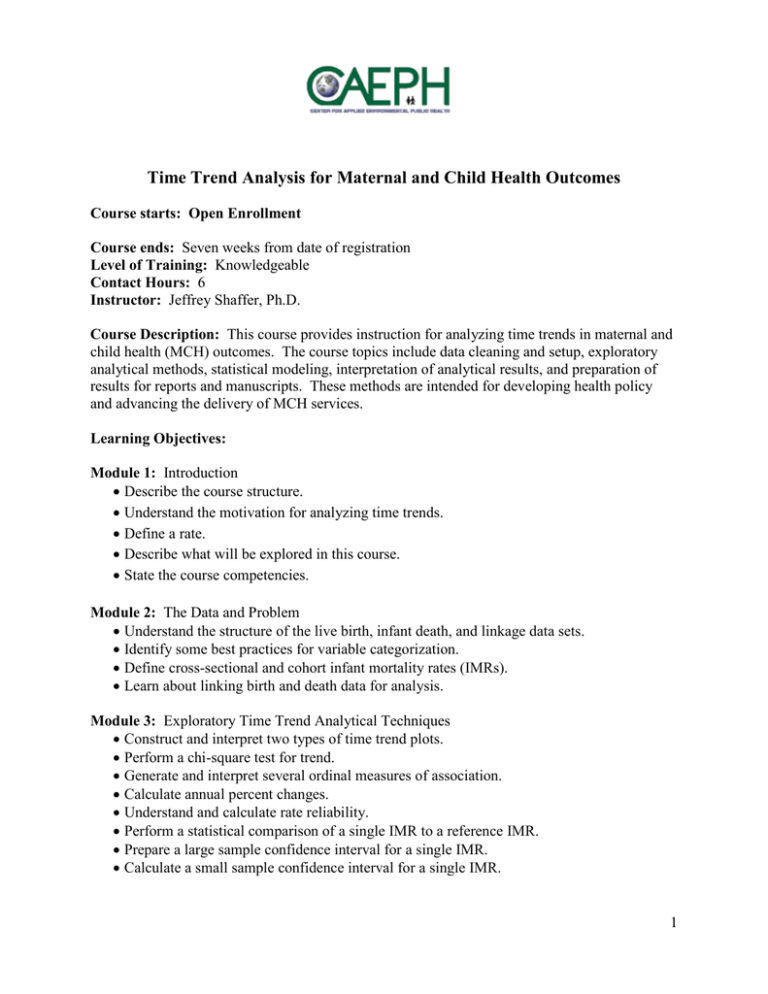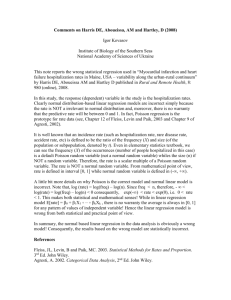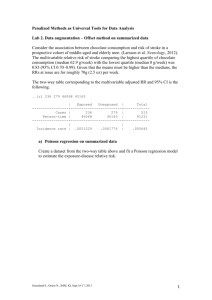Time Trend Analysis for Maternal and Child Health Outcomes
advertisement

Time Trend Analysis for Maternal and Child Health Outcomes Course starts: Open Enrollment Course ends: Seven weeks from date of registration Level of Training: Knowledgeable Contact Hours: 6 Instructor: Jeffrey Shaffer, Ph.D. Course Description: This course provides instruction for analyzing time trends in maternal and child health (MCH) outcomes. The course topics include data cleaning and setup, exploratory analytical methods, statistical modeling, interpretation of analytical results, and preparation of results for reports and manuscripts. These methods are intended for developing health policy and advancing the delivery of MCH services. Learning Objectives: Module 1: Introduction • Describe the course structure. • Understand the motivation for analyzing time trends. • Define a rate. • Describe what will be explored in this course. • State the course competencies. Module 2: The Data and Problem • Understand the structure of the live birth, infant death, and linkage data sets. • Identify some best practices for variable categorization. • Define cross-sectional and cohort infant mortality rates (IMRs). • Learn about linking birth and death data for analysis. Module 3: Exploratory Time Trend Analytical Techniques • Construct and interpret two types of time trend plots. • Perform a chi-square test for trend. • Generate and interpret several ordinal measures of association. • Calculate annual percent changes. • Understand and calculate rate reliability. • Perform a statistical comparison of a single IMR to a reference IMR. • Prepare a large sample confidence interval for a single IMR. • Calculate a small sample confidence interval for a single IMR. 1 Module 4: Traditional Regression Models • Assess time trends in IMRs using linear regression. • Evaluate time trends in IMRs using nonlinear regression. • Assess time trends in IMRs using LOESS smoothing. Module 5: Joinpoint Regression • Understand the rationale for joinpoint regression. • Learn how to interpret joinpoint regression results. • Assess time trends in IMRs using joinpoint regression software. Module 6: Poisson Regression I • Model time trends in IMRs using piecewise Poisson regression. • Correct for overdispersion in a Poisson regression model. • Interpret a fitted Poisson regression model. • Compare multiple Poisson regression models. • Use treatment contrasts to compare IMRs for specific time periods. Module 7: Poisson Regression II • Identify appropriate scales for temporal predictors. • Perform Poisson regression with a continuous temporal predictor. • Understand model building techniques using Poisson regression. • Relate and distinguish the regression techniques covered in this course. Competencies • Prepare and link live birth and infant death data for analysis. • Identify and apply proper exploratory analytical techniques for identifying underlying time trends in MCH outcomes. • Identify predictors for infant mortality and link them with IMRs. • Identify and apply proper modeling techniques for describing and explaining time trends in MCH data. • Interpret and prepare analytical results that are suitable for publication in professional reports and journals. To register for this course visit us at http://lms.southcentralpartnership.org 2






